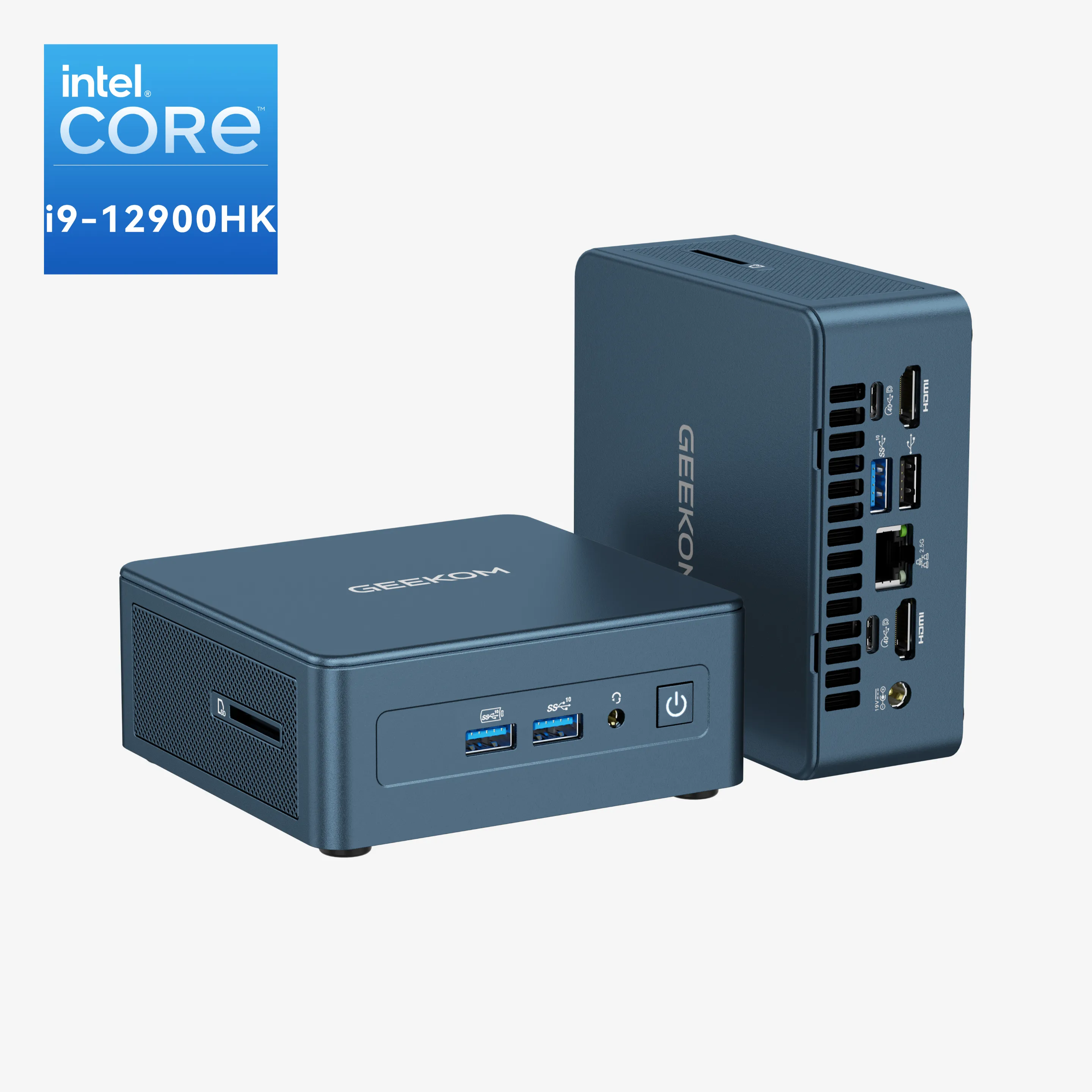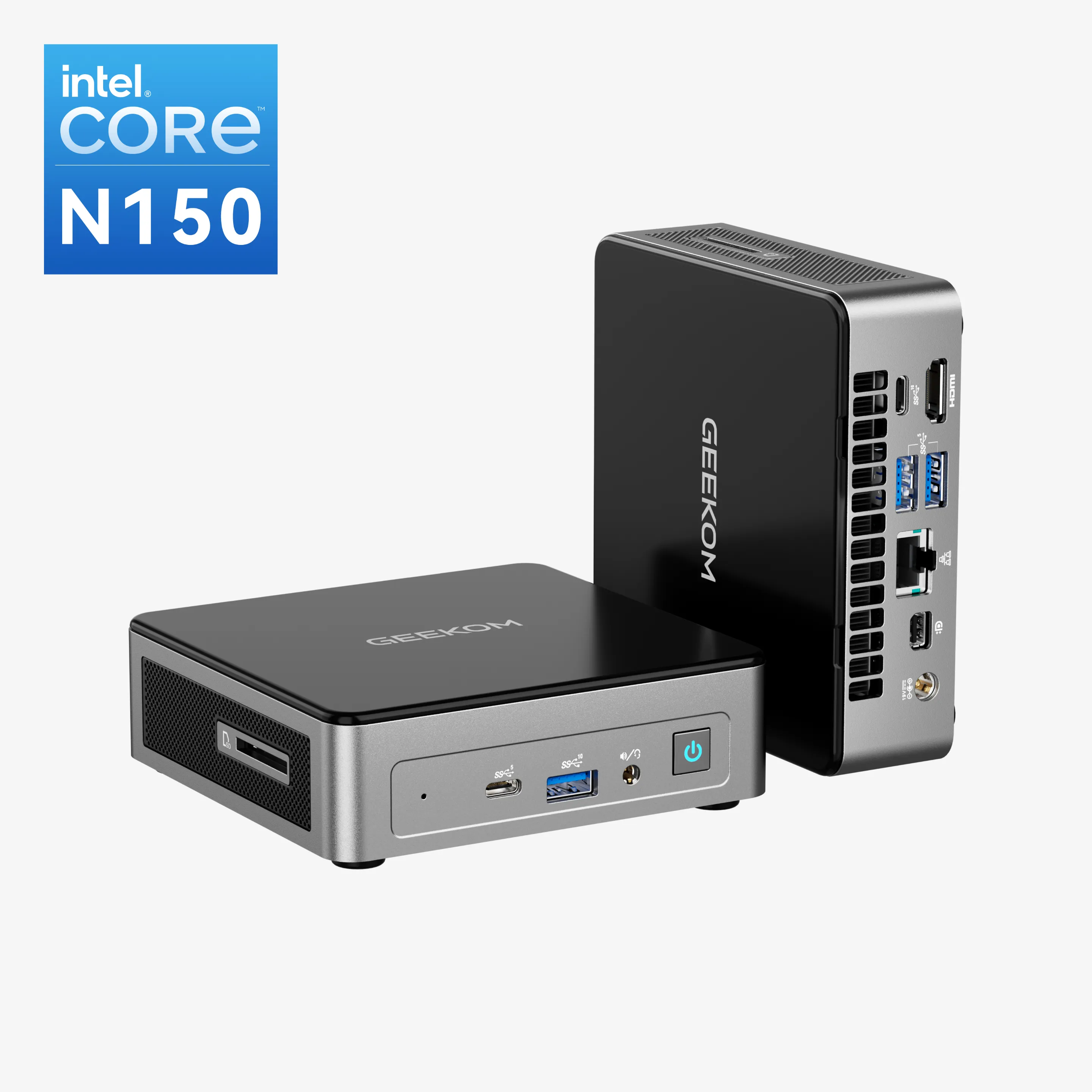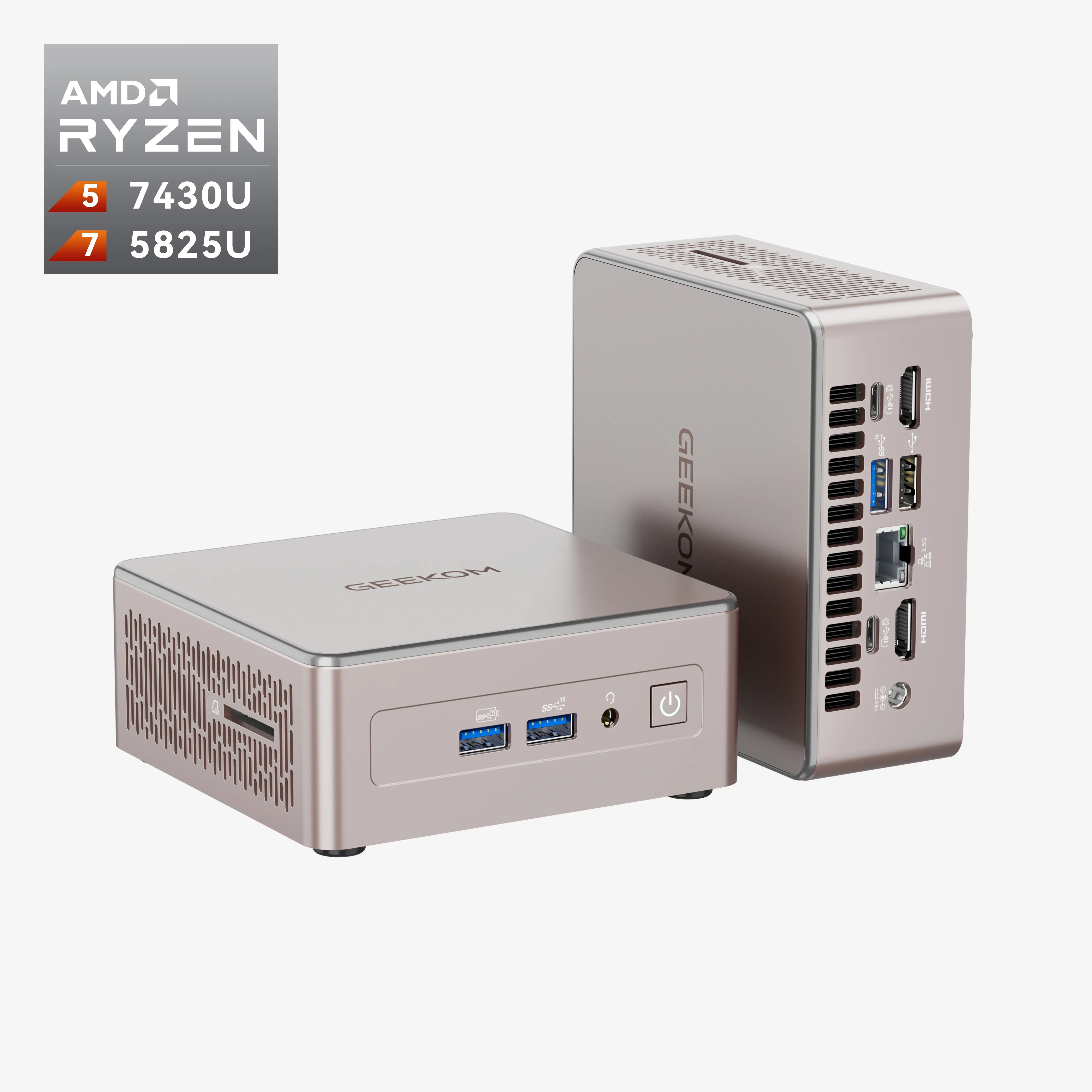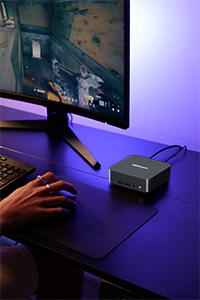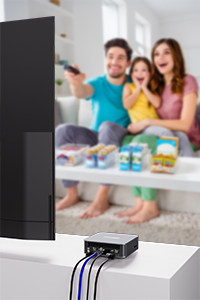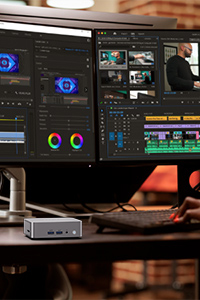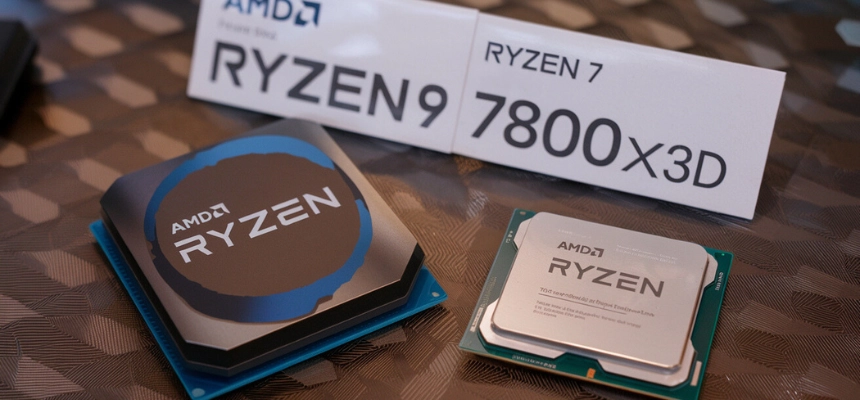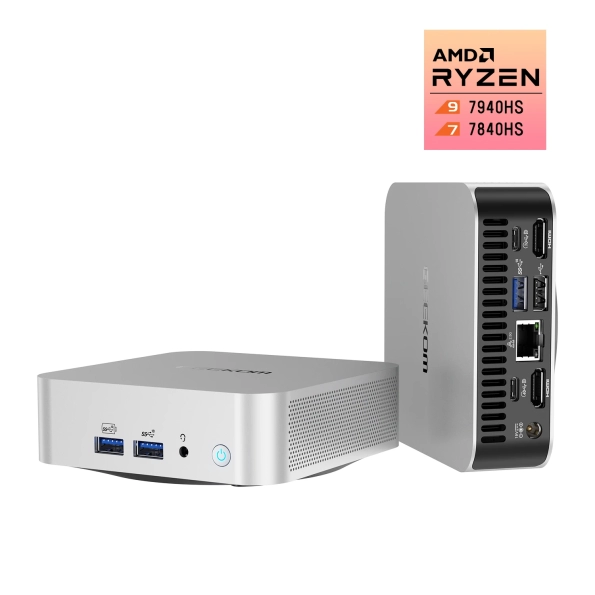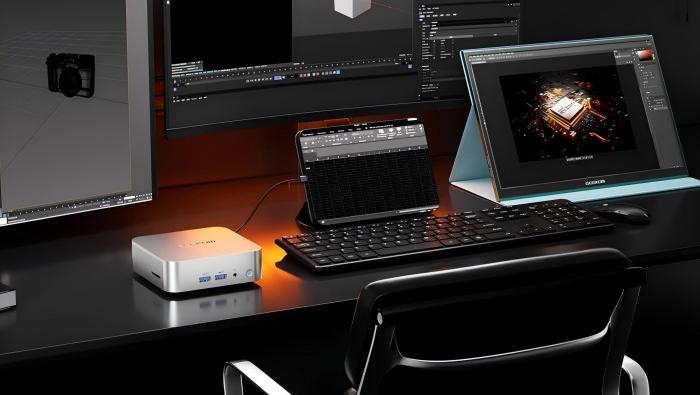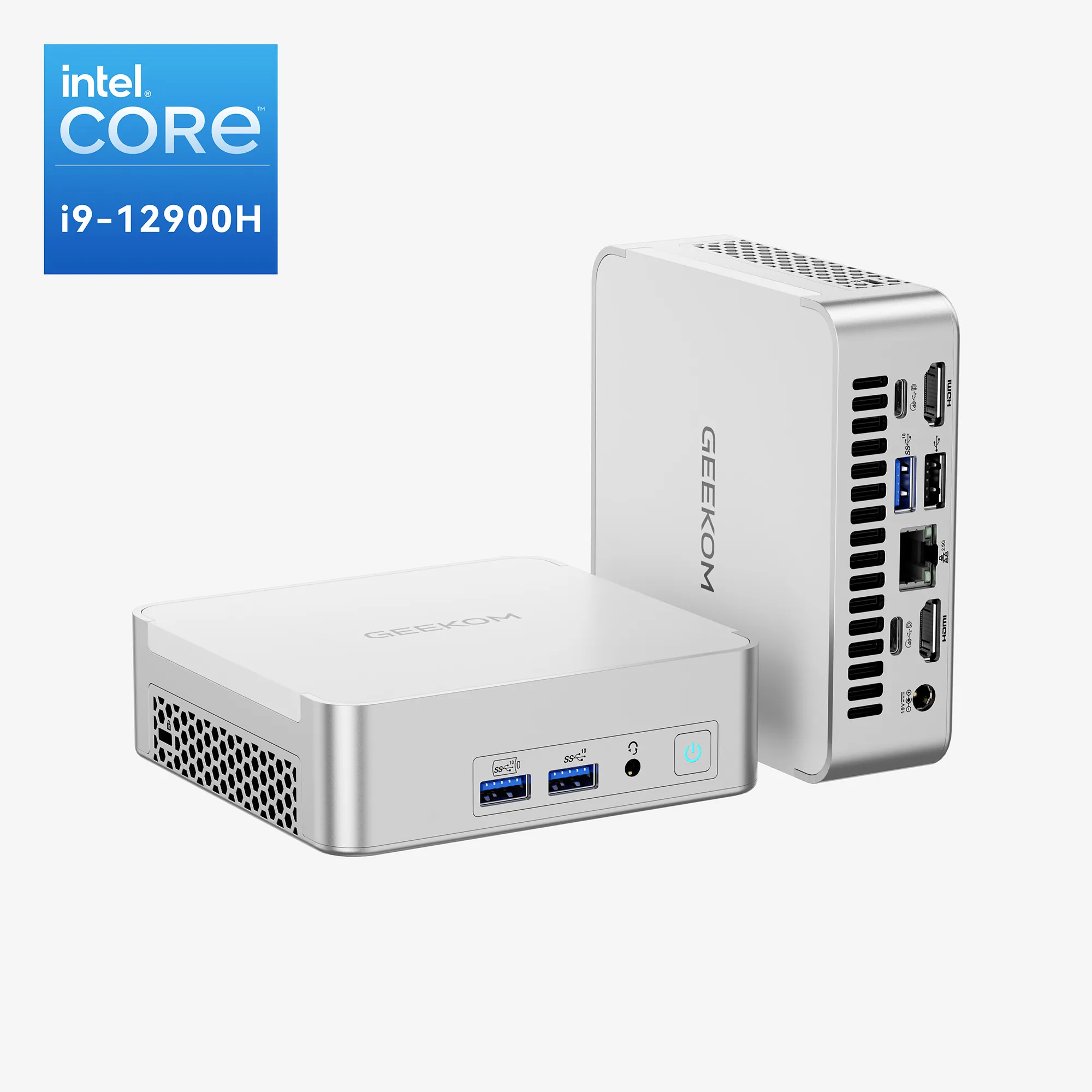Introduction
If you’ve been weighing options for a new CPU, you might be curious how the great AMD Ryzen 9 7900X and the AMD Ryzen 7 7800X3D differ. Both have been found to outperform, though they solve different problems with their respective audiences; hence, deciding might become too tricky.
Thus, the subsequent discussion will take us deeper into the distinctions between the two processors concerning their strengths and how they relate to one another. Whether you’re into gaming, content creation, or upgrading your system for a performance boost, understanding what each CPU has to offer is imperative for you.
We’ll compete to widely establish their specs, performance benchmarks, and value to establish who is better for your use case. So, ease yourself into this comparison, and let’s find out exactly what the two are offering: the 7900X and the 7800X3D.
7900X vs 7800X3D: Specs and Processor Architecture
Because we are somewhat oriented to what we are looking at, let us delve into specifics. Truly a side-by-side comparison of the AMD Ryzen 9 7900X and the Ryzen 7 7800X3D strongly delineates their idiosyncrasies and what they bring to the table. Here’s a breakdown of some key specifications that might be particularly interesting to you, as a user:
Specifications
| Feature | Ryzen 9 7900X | Ryzen 7 7800X3D |
| Cores/Threads | 12 cores / 24 threads | 8 cores / 16 threads |
| Base Clock | 4.7 GHz | 3.8 GHz |
| Boost Clock | Up to 5.6 GHz | Up to 5.0 GHz |
| L3 Cache | 64 MB | 96 MB (with 3D V-Cache) |
| TDP | 170 watts | 105 watts |
| PCIe Version | PCIe 5.0 | PCIe 4.0 |
| Memory Support | DDR5 | DDR5 |
| Integrated Graphics | None | None |
Core and Thread Count
One of the first aspects to consider is the difference in the core and thread counts. The Ryzen 9 7900X provides a better number of cores and threads, thus proving most useful for multitasking and in professional applications involving video editing or 3D rendering. The more the number of cores, the greater the number of information the CPU could provide for the executions, thereby improving performance on demanding workflows.
Clock Speeds
The other contributing factor is the clock frequency. The 7900X has a higher base and boost clock frequency, which, in general, translates to faster speeds for workloads that tend to rely on high clock frequencies, for example, gaming and certain computational applications. On the other hand, while the lower clock frequency of the 7800X3D gives a hand to AMD’s 3D V-Cache technology, this permits the user to leap when dealing with those applications requiring rapid access to huge datasets, like complicated simulations and deep data analysis.
Cache Size
When we talk about cache, the 7800X3D shines by sporting a huge 96MB L3 cache, courtesy of AMD’s revolutionary 3D V-Cache technology. Because of its size, it can sink latencies and ramp up performances in cache-sensitive tasks. This provides quite the leg-up to certain applications over otherwise faster CPUs without this technology.
Thermal Design Power (TDP)
There happens to be another factor worth mentioning, indeed: TDP. The Ryzen 9 7900X, fitting in with the other members of the lineage, has a noticeably high-rated TDP of a whopping 170 watts versus 105 watts for the 7800X3D. This means that, at least in theory, it should produce much more heat and, therefore, warrant the design of powerful cooling solutions, or consider carefully in case one chooses to build a system, while paying close attention to heat dissipation concerns or looking into energy efficiency!
PCIe and Memory Support
Both CPUs support the latest DDR5 memory, which offers more bandwidth and speed than previous generations. But to rise above, the 7900X can boast PCIe 5.0 support for even faster data transfer rates especially important throughput for anyone planning on an upgrade to the latest GPUs or superfast storage solutions.
Performance Comparison: Gaming and Productivity
Selecting the right CPU will drastically improve the gaming and productivity experience, hence we take a look at how the AMD Ryzen 9 7900X performs against the Ryzen 7 7800X3D across several benchmarked games and productivity applications. All gaming benchmarks in this review have been completed with the RTX 4060 graphics card at the 1080p resolution, to showcase CPU performance.
7900X vs 7800X3D Gaming
Here’s how both CPUs fare in a selection of popular games:
| Game | Ryzen 9 7900X (FPS) | Ryzen 7 7800X3D (FPS) |
| Cyberpunk 2077 | 144 | 139 |
| Call of Duty: Modern Warfare II | 165 | 160 |
| The Witcher 3: Wild Hunt | 175 | 170 |
| Fortnite | 240 | 235 |
The Ryzen 9 7900X does indeed deliver higher frame rates all-around simply because of the superior turbo clocks. However, all these are slight; hence, both CPUs could offer basic to demanding games without the significant bottleneck to deal with.
Productivity Performance
In terms of productivity, let’s look at performance metrics from several demanding applications:
| Application | Ryzen 9 7900X (Time, lower is better) | Ryzen 7 7800X3D (Time, lower is better) |
| Adobe Premiere Pro (4K Export) | 180 seconds | 188 seconds |
| Blender (BMW Render) | 110 seconds | 115 seconds |
| Visual Studio Code Compilation | 220 seconds | 230 seconds |
Ryzen 9 7900X, owing to its higher core and thread count, clearly has an advantage in productivity tasks rendering work with a base on multi-threading. Hence, the processor finds good purpose in video editing, 3D rendering, and software development, being able to run several threads in parallel and thus fasten completion.
This comparative investigation of gaming and productivity performance shows that, while the Ryzen 9 7900X tends to offer that slight edge in most situations, the Ryzen 7 7800X3D ranks strong, especially when one factor in power efficiency and the innovative design of cache architecture.
Related Post: Ryzen 5 7600 Vs 7600X: Differences You’ll Want To Know
Special Features and Technologies
Understanding both the technologies each processor comes packed with will most certainly clear the air when it comes to choosing between the AMD Ryzen 9 7900X and the Ryzen 7 7800X3D. Let us dig deeper into the top features enhancing performance and user experience.
AMD 3D V-Cache Technology (Ryzen 7 7800X3D)
The biggest seller of the 7800X3D is the 3D v-Cache technology debuting with AMD. The game-changing technology is excellent double-edged for things that depend on a large cache. With the added benefit of having an extra L3 cache chip stacked on it, the 7800X3D has a gigantic 96MB of L3 cache in it. Such an overwhelming boost in cache memory reduces latency substantially, imperative to complex processing work and gaming-like conditions where fast access to data is paramount.
With that beefed-up cache capability, the 7800X3D is perfect for your professional or gaming work in dealing with such large datasets or complex simulations, to keep it running smoothly and quickly.
AMD Zen 4 Architecture (Ryzen 9 7900X)
On the other hand, the Ryzen 9 7900X is built on AMD’s latest Zen 4 architecture and comes with a slew of improvements that promise better performance and power efficiency. The architecture improves the instructions per cycle rate, crucial for single-threaded workloads.
Other salient features of the Zen 4 architecture that made their way down to the 7900X are support for DDR5 memory and PCIe 5.0, effectively arming the model with a capacity to deal with fast memory and next-level storage solutions. Such features make the model future-proof for those looking forward to upgrading other components on the board, in the coming years as newer GPU and SSD generations grace the market.
Impact on System Build and User Experience
Neither Ryzen 9 7900X nor 7 7800X3D include integrated graphics users will need to get their own discrete graphics card disposal. This is standard for high-performance setups aimed at users requiring optimal graphics processing-like gamers or professionals in graphics-related industries. Beyond that, you have a slightly higher TDP on the 7900X than the 7800X3D, such that they could have different cooling requirements. The 7900X might need some more robust cooling solutions just to take care of heat dissipation, especially under load really serious consideration during high-performance PC builds.
One option is for you to decide the direction that these CPUs will take depending on your application requirements and system upgrade plans. From the increased cache on the 7800X3D suited for ultra-low latency applications to the wide compatibility and future-proofing of the 7900X based on Zen 4 architecture, both offer different advantages depending upon user priorities.
Thermal Management and Power Efficiency
Thermal function and efficient power consumption are keys to ensuring that high-end CPUs such as the AMD Ryzen 9 7900X and Ryzen 7 7800X3D will run cooler and last longer. These processors offer different heat and power parameters that could, in one way or the other, bias your choice based on the other configurations of the systems and applications intended for use.
The Ryzen 9 7900X has a higher TDP of 170 watts and consequently consumes more power, resulting in increased heat. This requires powerful cooling solutions high-quality air coolers or liquid cooling to maintain them within their best thermal limits. Cooling arrangements of such a kind are important not only for peak performance under high load swings but also for the potential to be safely overclocked without compromising their lifespan.
The Ryzen 7 7800X3D, with a TDP of 105 watts, on the other hand, is more power-efficient as such. This makes thermal management much easier with the added benefit of lower noise with some cooling solutions and in some cases even makes smaller cooling solutions feasible. This can indeed be more appealing to builds that users wish to go for, especially those confined in space or wanting a quieter working environment. The reduced energy consumption then translates to lower power bills, as overall consumption is thus reduced and hence the impact on the environment from consuming energy.
Overclocking Potential and Enthusiast Use
By having a higher base as well as a boost clock, the Ryzen 9 7900X has an edge in out-of-the-box performance. Its architecture, coupled with a TDP of 170 watts, brings a little more room for overclocking. The major boost in performance, especially when paired with some of the advanced cooling solutions that can deal with the additional heat produced, is what enthusiasts should expect to be capable of achieving due to the elevated core speeds. This subsequently becomes the preferred choice, easily, for users wishing for maximum performance in gaming and resource-intensive applications, where even minor performance differentials from slightly higher clock speeds can result in a satisfactory experience.
On the other end, the Ryzen 7 7800X3D is blessed with advanced technology for 3D V-Cache from AMD that increases its performance in cache-sensitive applications by having a lower TDP and base clock. It presents a unique proposition to overclockers who are interested in tuning performance in a way to, in turn, gain in specific applications instead of going for higher clock speeds.
7900X vs 7800X3D: Price and Value for Money
Their cost-to-performance ratio turns out to be the basic deciding factor for many users while judging which CPU to go for. The AMD Ryzen 9 7900X and Ryzen 7 7800X3D each have specific advantages, and we will metric their performance depending on our budget and computing requirements.
The typical price of the Ryzen 9 7900X is slightly on the pants side, reflecting its higher core counts and higher speeds to suit heavy users hoping to attain peak performance for video editing, 3D rendering, and high-end gaming. For serious workloads that require the utmost calibre of performance and aren’t hindered by budgetary constraints, this makes the 7900X the best long-term value proposition, future-proofing your rig with PCIe 5.0 and rapid DDR5 memory.
The Ryzen 7 7800X3D tends to be just slightly less expensive but represents good value for gamers and professionals whose applications will benefit greatly from additional cache capacity. Lower wattage usage and lack of heat generation can help someone who wants good performance, power efficiency, and a moderate cost.
Buying Advice
At a price that reflects both the existing state of demand and supply, the 7800X3D would be reasonably appealing in terms of criterion pricing. This is directed to the clientele who are interested in performance effectiveness-an area of utmost application-specific interest in gaming and data niggling. If there’s going to be a diverse and high-demand application built for a workstation, then it’s advisable to spend the extra money on the 7900X, although it’s a bit pricey for some.
All in all, in the field of Mini PC, many CPUs are good substitutes, and you can even buy a whole mini computer at the same price. So, if you are interested in a mini PC, GEEKOM can always bring you surprises in this regard!
★★★★★ ( 4.9 Based on 45 reviews)
- AMD Ryzen™ 9 7940HS.
- AMD Radeon™ Graphics 780M.
- Dual-channel DDR5 5600MT/s, up to 64GB.
- M.2 2280 PCIe 4.0 ×4 SSD, up to 2TB.
- 2.5G Ethernet, Wi-Fi 6E, Bluetooth® 5.2.
- Stunning minimalistic design. 0.47L aluminium housing.
Conclusion
After comparing AMD Ryzen 9 7900X and Ryzen 7 7800X3D, they both are very powerful processors designed for very different types of users. While the 7900X’s boldness and future-proofing show themselves from its sheer power, it is in its very nature more befitting for those who need absolute power and are willing to shell out some bucks for it.
On the other hand, the 7800X3D is a great-value processor, with its innovative 3D V-Cache technology and low power consumption. To maximize the effective performance to be aligned with your particular needs- be it high-end productivity or a gaming one depends entirely on your expectations of value for the investment.




